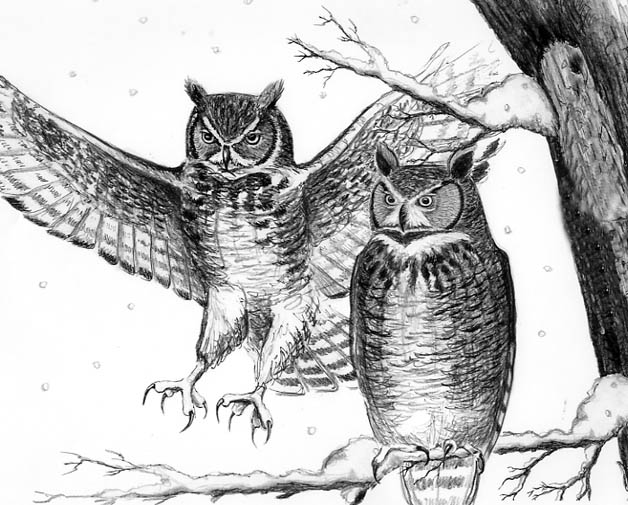
Dear Bird Folks,
Here’s a question that I’m sure you have addressed before, but if you have, I don’t recall the answer. Do many birds mate for life?
– Maryanne, Great Barrington, MA
I agree with you, Maryanne,
I could have sworn that I wrote about birds mating for life several times before. But after searching through my massive database, which is the big pile of newspaper clippings on my desk, I could not find a single column on the topic. Apparently, you and I are having matching delusions. It’s too bad for me. I was hoping I could answer your question by sending in an old column and then go back to bed. Oh well, I probably should get up anyhow. It’s almost suppertime and I don’t want to miss it. I’ve already slept through breakfast and lunch.
When it comes to pair bonding, birds aren’t much different than us humans; they have a wide spectrum of relationships. Some birds remain together until death do they part. Other bird couples really don’t care for each other and only stay together for the sake of the children. Once the kids go their separate ways, so do the parents. Some male birds don’t even wait for the kids to grow up before they take off. The females are left alone to do all of the incubating, care giving and transportation to soccer games.
One species that probably mates for life is the Great Horned Owl. Once paired up, both the male and the female birds remain on their joint territory year-round. They don’t migrate or have a vacation of any kind. If another owl tries to move into their territory, it is quickly driven off, or eaten. (Don’t ever try to have an affair with a Great Horned Owl.) House Wrens have a different approach. They leave their breeding grounds at the end of each summer and return each spring to start anew. The super hyper male quivers his wings and chatters his song in hopes of attracting a female. But, even if he does manage to get lucky the romance may not last for very long. Newly formed wren couples may only remain together long enough for the chicks to fledge. Female wrens have been known to leave their hubbies alone to finish the job while they head off to start a new family with different males. (This has reality show written all over it.)
Tom turkeys are among the super studs of the bird world. They have no interest in pair bonding with anything, except themselves. Even a one-night stand is too much of a commitment for these birds. Every spring the toms strut their stuff for all the ladies to see. During the breeding season a tom will mate with as many different females as he can attract, or until he passes out. The hens do all the work from that point on.
A chickadee pair formation is more like an arranged marriage. During the winter chickadees live in flocks that consists of a dominant male and a dominant female, plus many lower ranking subordinate birds. (That is why a chickadee takes one seed from a feeder and flies away. It must leave quickly before a dominant bird arrives and kicks its….) Come springtime the flock breaks up, with most birds pairing off based upon their flock ranking. The two hotshot dominant birds fly off together, followed by the next highest ranked birds on the chickadee corporate ladder. Rarely will a top-of-the-list female mate with a bottom-of-the-list male. Only human females seem to do that. Most of us have a soft spot for cardinals. We embrace the idea of Mr. and Mrs. Cardinal spending their entire life together, and often this is true. However, there is a limit to what these birds are willing to put up with. Birds pair up for the sole purpose of producing more birds. They don’t need each other for taking out the garbage, cooking fancy meals or giving back rubs. If a cardinal couple fails to successfully produce a brood, you can bet divorce rumors will be in the air. Cardinals rarely remain together if they aren’t able to produce offspring.
The concept of mating for life is fairly uncommon in the bird world. Even the birds that breed together in consecutive years don’t necessarily spend the winters together. The only time they like to see each other is when it’s time to do some breeding. (I think we all know human couples like that.) Also, the birds that we think are monogamous aren’t really as pure as they’d like us to believe. DNA studies have shown that a large percentage of birds have affairs. Apparently, while the male bird is guarding the front door his old lady is slipping out the back and hooking up with a friendly neighbor. This kind of behavior might seem sleazy to us but it actually benefits the birds. The “friendly neighbor” is often an especially fit male. The more chicks that this Romeo can father, the stronger the species will be.
I’d like to write more on this topic, Maryanne, but I just heard my wife calling me. She probably wants me to take out the garbage. I’d better do it quickly or there might not be any more fancy meals for me, and there definitely won’t be any more back rubs.